Lectures
Selected Lecture Topics
I. GEOLOGY
Plate Tectonics: The Earth’s User’s Manual
This lecture, which can be tailored to the tectonics of any region, is an introduction to the dynamics of our planet. Generally, the lecture includes the formation of the Solar System and the Earth; the differentiation of the Earth into a layered body with a core, mantle and crust; mantle convection; the theory of plate tectonics; current-day plate boundaries; spreading centers and the generation of oceanic crust; continental rifting; subduction zones and the generation of continental crust; continental collision and the growth of continents; transform faults; Pangea and continental re-arrangements over time. It ends with the specific tectonic setting of the region we are visiting.


Some Like It Hot: Magma, Volcanoes and Eruptions
Magma erupting at the surface is the primordial process of the Earth; it brings everything we have at the surface of the Earth from the Earth’s interior. Generally, this lecture covers: the generation of the three principal magmas–basalt, andesite and granite; the importance of silica and water content on the eruptive behavior of magmas–either passive, explosive or violently explosive; different volcanic landforms–shield volcanoes, cinder cones, stratovolcanoes, craters and calderas; various lava types; eruption columns, ash and pyroclastic flows; eruption mechanisms and eruption prediction; and volcanic hazards. Again, this lecture can be tailored to the specific volcanic setting of the region visited, which is what concludes the lecture.


Let’s Rock ‘n’ Roll: Earthquakes and Seismic Hazards
Earthquakes are the most startling evidence for our restless planet. This lecture covers: faulting as the mechanism generating earthquakes; seismic waves and seismic hazards; and plate tectonics and the distribution of earthquakes. It concludes with the tectonic setting, earthquake history and faulting of the specific region being visited– be it associated with subduction zones, mountain formation, rift valleys or transform faults.


Fire and Ice: Global Climate Change, Past and Present
One of the urgent topics of our times, this lecture presents the context for understanding the current climate warming. It covers: the various factors that control global climate; variations in solar input by latitude and over time through Milankovitch cycles; oceanic circulation and the thermohaline cell; plate tectonics and the assemblage and rifting of super-continents; greenhouse gasses and the greenhouse effect; glaciation; the history of global climate on Earth from the sedimentary rock record, deep sea sediment cores and deep glacial ice cores; and the future trajectory of the global climate and its implications.


James Hutton and The Discovery of Time
James Hutton (1726-1797) was a gentleman natural philosopher who made careful observations of the Earth in his native Scotland and who drew careful conclusions. He published Theory of the Earth in 1795, setting forth the basic principles of geology. Before Hutton, the age of the Earth was 6,000 years; all surface features of the Earth were shaped by the great flood of Noah; and all rocks were thought to be sedimentary, laid down in that same flood. After Hutton, the Earth was thought to be about 300 million years old (!); the same slow processes that operate on the Earth today were thought to have shaped the Earth in the past (not one catastrophic flood); and not all rocks were thought to be sedimentary; in particular, some rocks were igneous, produced by the solidification of molten magma. Hutton precipitated one of the great intellectual revolutions in the history of the West and gave Darwin the time he needed for the slow process of evolution put forth in Origin of Species (1859). How Hutton did this, and our current understanding of geologic time, are the subjects of this lecture.


Reading Rock: What Rocks Tell Us About the Earth
Not all rocks are the same, and each has a different amazing story to tell. Simple observations of rocks can unlock those stories. This lecture covers minerals; the three principal rock types–igneous, sedimentary and metamorphic; how they each form on Earth; how they each can be identified by a simple observation of texture; what information they each can reveal about the Earth; and how the Earth re-cycles them. This lecture provides the vocabulary and grammar needed to read rocks.


Some Say in Ice: Ice sheets, Glaciers, and Glaciated Terrain
The Arctic and the Antarctic are worlds of ice, as are high elevation mountains. However, the results of glaciation can be found in many places. This lecture looks at: how ice sheets and glaciers form; how they behave; and the geologic deposits and landforms they create. As with other lectures, it can be tailored to the specific glacial features of the region visited.


Living Rock: Coral and Coral Reefs
Coral reefs are the most productive region of the oceans, supporting an incredible diversity of life. They are important in tropical waters, and are also represented extensively in the rock record of the Earth. This lecture includes: the distribution of reefs; the formation of reefs; the anatomy of coral polyps; their symbiotic relationship with the algae zooxanthella; their secretion of calcium carbonate and the building of reefs; and their temperature sensitivity and coral die off with rising sea temperatures.


II. ART HISTORY
Permanence and Harmony: Egyptian Art
Narmer unified Upper and Lower Egypt around 3100 BC. The Pharaohs were associated with Ra, the sun god and became divine when they died. To guarantee the harmony or ma’at of Egyptian society, the buried king had to be preserved for eternity. This focus on permanence, as well as the isolation of the Nile River Valley, led to a consistent artistic style that changed little over 2500 years. This lecture looks at: the Egyptian creation story and the Egyptian pantheon; the rich symbolism of Egyptian iconography; the role and status of the Pharaoh; and Egyptian sculpture, painting and architecture, all of which influenced the Greeks.

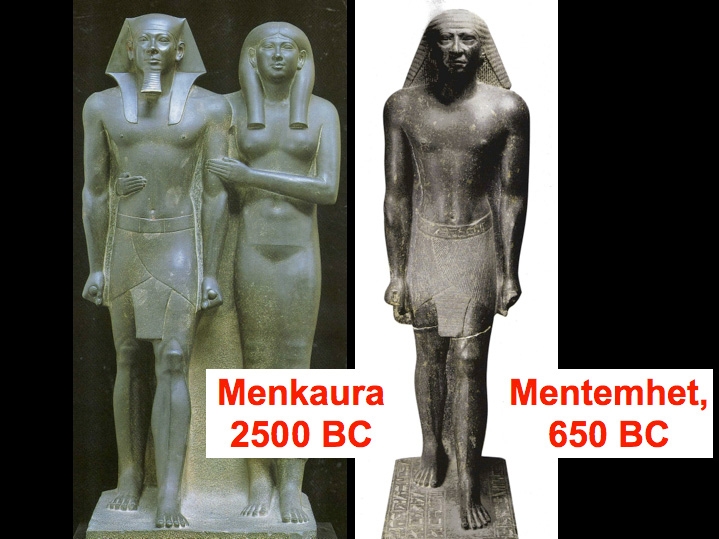
Pacifists and Warriors: Minoan and Mycenaean Culture
When the Greeks emerged from the Dark Ages in 800 BC after a period of trade collapse and cultural decline, they looked back before 1200 BC to the cultures of the Ancient Aegean that were invoked in the Iliad and the Odyssey. The Minoan and Mycenaean Civilizations provided the cultural roots for the Greeks. This lecture includes: the architecture, art and culture of the Minoans and the Mycenaeans; the contrast between these cultures; the cultural legacy provided to them by the Egyptians; and their cultural legacy to the Greeks.


Let’s All Speak Greek: Archaic Sanctuaries and the Rise of Pan-Hellenic Identity
During the Archaic Period (800-480 BC), warring Greek city states came together periodically at various sanctuaries for religious observances and athletic competitions. These games helped forge a common Greek identity and a common Greek language. This lectures includes: a brief historical introduction to the Archaic Period including the Homeric epics, the Iliad and the Odyssey; an introduction to the Greek pantheon; the nature and significance of Greek sanctuaries, with special attention to Olympia and Delphi; the history and significance of the Olympic and Pythian Games; and the importance of athletes and sports culture in Archaic Greece and in the 20th century. The lecture can be tailored to the specific sanctuaries visited.

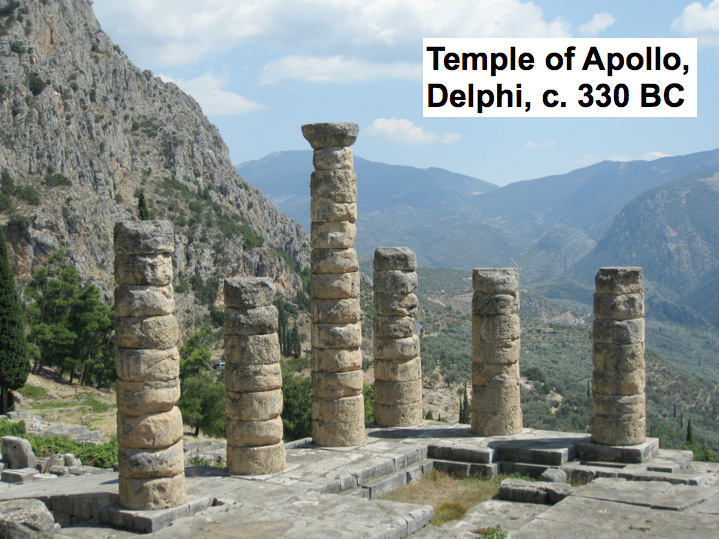
Warriors, Athletes and Gods: Greek Culture in the Classical Age
The Greek Classical Age begins with the Athenian defeat of the Persians in 479 BC and ends with the defeat of Athens by Sparta in the Peloponnesian Wars in 404. This lecture looks at: the transition from the Archaic to the Classical Period; the development of the Acropolis as a celebration of Greek superiority over the Persians; the quest in art, supported by Plato and his student Aristotle, for increasing realism based on the imitation of nature; the Greek search for beauty in perfect proportions in architecture and sculpture; idealism in Greek sculpture and the “invented” male body; the celebration of gods, heroes, athletes and the male body; the importance of the symposium in Greek culture; the status of women in Classical Greece; and the legacy of the Greek temple form, sports culture, and the Greek body in the contemporary world.


Millennial Fears: Sacred Pilgrimage and the Romanesque Church
Fears that the world would end with the Second Coming of Christ in 1000 AD vastly increased the number of pilgrims across Europe. They made months- or years-long treks on foot as proof of their spiritual virtue and to be in the presence of sacred relics held in cathedrals. This lecture includes: the motivations for pilgrimage; why Santiago de Compostela in northwestern Spain was the focus of pilgrimage; the changes that resulted from pilgrimage–in the design of Romanesque churches; in Gregorian Chant and sung masses; and in the sculptural programs on Romanesque churches with their focus on the Last Judgement. The lecture makes the connection between European attitudes towards Islam in the Medieval world and in contemporary culture.


Reformation and Counter-Reformation: From the Renaissance to the Baroque
Lavish spending on art in the Renaissance led directly to the Protestant Reformation, which in turn led to the Counter-Reformation and Baroque art. This lecture looks at this remarkable transition and includes: Building programs and art patronage by Popes Sixtus IV and Julius II, including the Sistine Chapel and the new St. Peter’s; the High Renaissance and its artists Michelangelo and Raphael; Martin Luther’s many objections to the Catholic Church, including to the selling of indulgences and church offices to raise money for these art projects in Rome; his ex-communication by Pope Leo X and the nature of the Protestant Reformation; the launch of the Counter- Reformation by Pope Paul III in 1540; and the lush, dramatic Baroque art, meant to invoke a direct emotional and spiritual response, promoted by the Counter- Reformation in response to Luther’s objections to religious images.


Mosques, Minarets, Mausolea, and Madrassas: Islamic Architecture
As in all Islamic art, Islamic architecture is aniconic, without religious images of people; it is decorated primarily with the words of Allah as revealed in the Qu’ran and with geometric and organic designs. This lecture looks at: the life of Muhammad and the rise of Islam; the basic tenets of Islam and its sacred texts; the rapid spread of Islam under the Umayyad (661-750, Damascus) and Abbasid (750-1258; Baghdad) Caliphates; the history of the Sunni/Shia schism; the architecture of mosques and the models for courtyard, hypostyle and central-plan mosques; how the four-iwan mosque was developed as Islam was Persianized under the Abbasid Caliphate; the Islamic mausoleum, developed along the Silk Road as shrines for charismatic Sufi teachers; and the Islamic madrassa, based on Buddhist monasteries along the Silk Road. This lecture can be tailored to the specific Islamic architecture of the region visited.


What Goes Around Comes Around: Hinduism and Hindu Art
Eastern philosophy/religion is radically different from Western philosophy/religion, and is often difficult for Westerners to understand. While the West believes in linear time, the East sees time as cyclical and endlessly repeating. While the West believes what we observe with our senses is reality, the East believes this reality is illusory (a figment of our minds) and a distraction from a transcending eternal reality. This lecture introduces and explains these concepts; looks at the foundational texts of Hinduism– the Vedas, the Upanishads, the Mahabharata and Bhagavad Gita, the Ramayana and the Tantras; introduces the principal players in the Hindu pantheon–Brahma, Vishnu, Shiva and Devi; looks at how they are portrayed in art and the symbolism of each; examines the various Hindu temple forms and significance; and explains Hindu religions practice.


Wisdom and Compassion: Buddhism and Buddhist Art
Buddhism, like Hinduism, is rooted in Eastern philosophy. This lectures looks at the historical Buddha (Siddhartha) and his successful quest for enlightenment (an understanding of the transcendental reality beyond the illusory world); his teachings (dharma), including the four noble truths and the eight-fold path (as a means to attain enlightenment); the inward-turning practices of mindfulness and meditation; the concepts of emptiness and egolessness; the history of Buddhism and Buddhist art in India; the expansion of Buddhism to Central Asia, China, Japan, Tibet and Southeast Asia from the 1st to the 11th centuries AD and Buddhist art and architecture in those areas; the branches of Buddhism–Theravada, Mahayana and Vajrayana–and their differences; and the focus in Mahayana Buddhism on compassion for others. This lecture can be tailored for the specific Buddhist practices of the region visited.


He Toi Whakairo, He Mana Tangata: Maori Art and Culture
“Where there is artistic excellence, there is human dignity.” Art played a central role in Maori culture, from every day objects, to buildings and personal adornment. This lecture includes: the origins of Polynesian culture; the Polynesian diaspora and the settlement of Aotearoa (New Zealand); Maori adaptations to a temperate land; the Maori pantheon and creation story; the role of genealogy and family in Maori culture; the role of warfare in Maori culture; the role of taonga (treasures) in Maori culture; and the Maori arts of carving, building, weaving and personal adornment.
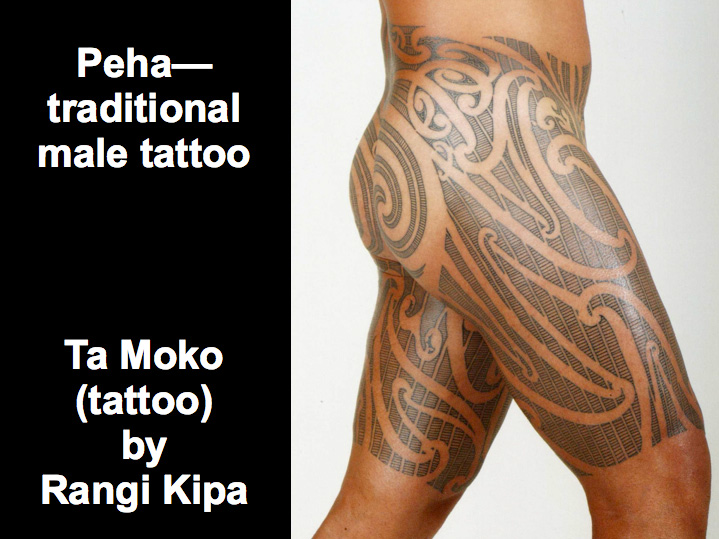
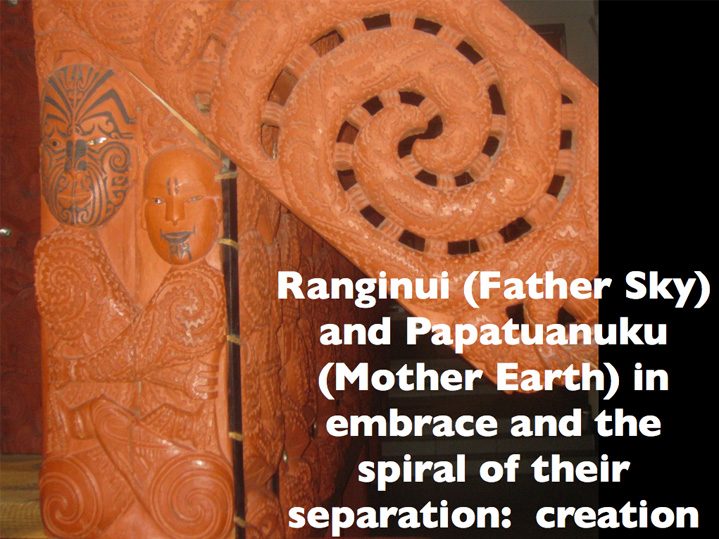
III. CULTURE AND RELIGION
Gods and Heroes: Classical Polytheism
The pantheon of the Classical world derives from the more-ancient polytheistic traditions, associated with the nature gods, of the flood plain civilizations of the Ancient Near East and the Indus River Valley. However, the Greeks, with their emphasis on humanitas, conceived of their gods as human and deeply-embedded in human affairs. This lecture includes: the background of polytheism and its connection to the Greek pantheon; the source texts for the Greek pantheon; the creation story of the Greeks, beginning with Ouranos (sky god) and Gaia (earth goddess); the six “firstgeneration” Greek gods (Zeus, Poseidon, Hades, Hera, Hestia and Demeter); the myriad “second generation” Greek Gods, mostly children of Zeus; the role of gods in human affairs; the relation of heroes to the Greek pantheon; Greek sacred space and religious practice; and the contrast between Classical polytheism and Jewish/Christian/Muslim monotheism.


The Triumph of Monotheism: The Roman Empire and the Rise of Christianity
Judaism and Christianity were a threat to the Roman Empire and were suppressed, and yet within a short period of time from 300 to 600 AD, Christianity expanded from 5 to 30 million adherents, and monotheism replaced polytheism. This lecture looks at how that happened and includes: a brief introduction to the history of monotheistic traditions; the practice of Judaism and Christianity under the Roman Empire from Augustus to Theodosius; the “pagan” Roman Emperor cult as a source of state power; the transition to a Christian Roman Empire, including the origin of the basilica-plan western church under Constantine and the rise of a Christian Emperor cult; how Christianity resonated with and was understood in terms of Classical Polytheism; changing Christian iconography, particularly the image of Christ, over time; and the consolidation of Christian orthodoxy under the Byzantine Empire.

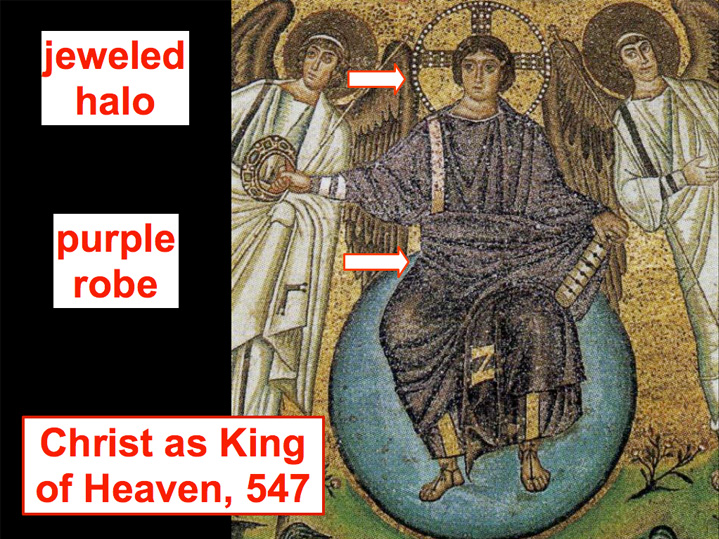
Holy Warriors: The Rise of Islam and the Christian Response
Muhammad died in 632 AD, and within 100 years, Islam had expanded across North Africa into the Iberian Peninsula and throughout the Middle East and into Central Asia. This expansion, often at the expense of Christianity, provoked an immediate and sustained response in Christian Europe. This lecture explores the origins and central tenets of Islam; the reasons for its rapid expansion; the European response to Islam from Charlemagne to Louis IX, including images on Romanesque pilgrimage churches and in manuscripts; and the background, history and sad legacy of the Crusades.

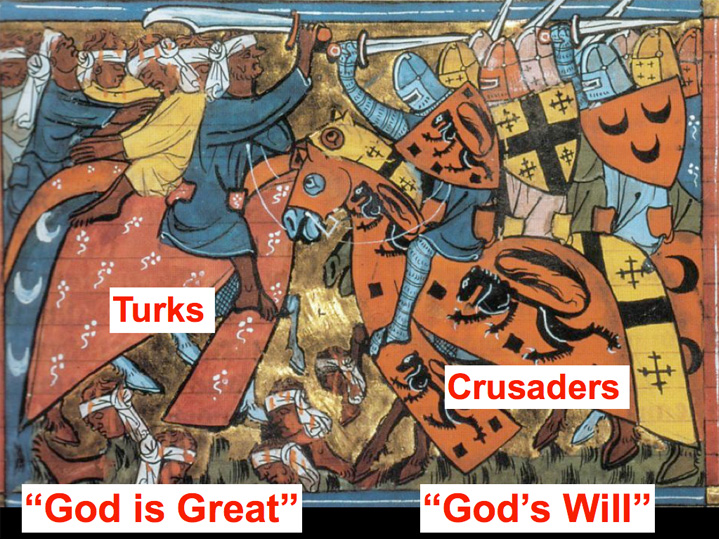
Savage Beasts and Noble Savages: The Legacy of Conquest
When Europe encountered the New World in 1492, the long-standing negative images of Arabs from the Reconquista and the Crusades conditioned European reactions to the indigenous peoples of the New World (and Africa). Images, often fabricated, of these peoples were widely disseminated in Europe by printing. This lecture looks at: the first images of Native Americans published in Europe; the European sense of superiority compared to “primitive” and “barbaric” “others”; how this “savage beast” image continued in the United States through the 19th century; how its converse, the “noble savage” arose in the 17th century and why; how both the savage beast and the noble savage were constructions that Europeans and Euro-Americans imposed on “others” to suit their own purposes; and how neither image reflects who Native Americans are in reality.

